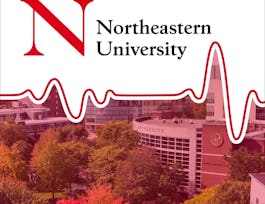As a human being, we all consume products and/or services all the time. This morning you got up and ate your breakfast, e.g., eggs, milk, bread, fresh fruits, and the like. After the breakfast, you drove your car to work or school. At your office, you used your computer, perhaps equipped with 27” LCD monitor. During your break, you drank a cup of coffee and played with your iPhone. So on and so forth. You probably take it for granted that you can enjoy all of these products. But if you take a closer look at how each of these products can be made and eventually delivered to you, you will realize that each one of these is no short of miracle. For example, which fruit do you like? Consider fresh strawberries. In order for the strawberries to be on your breakfast table, there must be numerous functions, activities, transactions, and people involved in planting, cultivating, delivering, and consuming strawberries. Moreover, all of these functions, activities, transactions, and people are connected as an integral chain, through which physical products like strawberries themselves and virtual elements such as information and communication flow back and forth constantly. By grouping related functions or activities, we have a supply chain, comprised of four primary functions such as supplier, manufacturer, distributor, and finally consumer. A supply chain is essentially a value chain.

Give your career the gift of Coursera Plus with $160 off, billed annually. Save today.


Supply Chain Management: A Learning Perspective

Instructor: Bowon Kim
92,894 already enrolled
Included with 
(1,674 reviews)
Skills you'll gain
Details to know

Add to your LinkedIn profile
9 assignments
See how employees at top companies are mastering in-demand skills


Earn a career certificate
Add this credential to your LinkedIn profile, resume, or CV
Share it on social media and in your performance review

There are 10 modules in this course
In this chapter, Professor Bowon Kim briefly introduces students to this course. It is about philosophical and moral foundation of a supply chain management.
What's included
5 videos
In this chapter, we will learn what a supply chain is, what supply chain management is all about, and why it is important to grasp the fundamentals of supply chain management in creating real value for the customers.
What's included
6 videos1 reading1 assignment
Effective SCM requires the firm to have strong operations capabilities. One can group various operations capabilities into three representative capabilities: Controllability, flexibility, and integrating capability. In order to be competitive in the market, the firm must retain high levels of these capabilities. In this chapter, we will discuss what the management capabilities are and the relationship among these capabilities.
What's included
9 videos1 assignment
Learning is an essential part of any creative activity. In this chapter, we will learn what the learning capability is and its dynamics in supply chain management. We will also look into the learning propensity model and how the learning processes influence the performance of a supply chain system.
What's included
9 videos1 assignment
Quality is one of the most important factors that determine the utility. That is, the higher the quality, the larger the utility experienced by the customer. But, quality is not a one-dimensional concept. In fact, it is a highly complex, multi-layered one. In this chapter, we will explore this complex concept, 'Quality'. We will learn dimensions of quality, total quality management (TQM), quality dynamics and statistical process control (SPC) in detail.
What's included
9 videos1 assignment
New product innovation is the key to firm's success. In order to sustain successful business, the firm must design and manage its new product process effectively and efficiently. In this chapter, we will learn new product innovation and new product development process. Especially, we will look into and compare two approaches, traditional approach and cross-functional approach.
What's included
6 videos1 assignment
In order to optimize the supply chain performance, the firm must design its supply chain effectively. In this chapter, we will talk about how to design the effective supply chain and look into the designing factors of supply chain management in detail.
What's included
7 videos1 assignment
Coordination is the key dimension of infrastructure in supply chain management. In this chapter, we will talk about what supply chain coordination is and why it is important. And we will learn vendor-managed inventory (VMI) and postponement in detail.
What's included
4 videos1 assignment
Why is the effective SCM important for the firm to gain competitive advantage in the global market? In this chapter, we will consider crucial issues related to the question and deal with global supply chain management and value chain sustainability.
What's included
5 videos1 assignment
The final exam is based on the concepts and theories we have learned in this course. It includes 30 multiple choice questions.
What's included
1 assignment
Instructor

Recommended if you're interested in Business Strategy

Northeastern University

Technion - Israel Institute of Technology

HubSpot Academy

University of Colorado Boulder
Why people choose Coursera for their career




Learner reviews
Showing 3 of 1674
1,674 reviews
- 5 stars
77.38%
- 4 stars
17.97%
- 3 stars
2.85%
- 2 stars
0.95%
- 1 star
0.83%
New to Business Strategy? Start here.

Open new doors with Coursera Plus
Unlimited access to 7,000+ world-class courses, hands-on projects, and job-ready certificate programs - all included in your subscription
Advance your career with an online degree
Earn a degree from world-class universities - 100% online
Join over 3,400 global companies that choose Coursera for Business
Upskill your employees to excel in the digital economy
Frequently asked questions
Access to lectures and assignments depends on your type of enrollment. If you take a course in audit mode, you will be able to see most course materials for free. To access graded assignments and to earn a Certificate, you will need to purchase the Certificate experience, during or after your audit. If you don't see the audit option:
The course may not offer an audit option. You can try a Free Trial instead, or apply for Financial Aid.
The course may offer 'Full Course, No Certificate' instead. This option lets you see all course materials, submit required assessments, and get a final grade. This also means that you will not be able to purchase a Certificate experience.
When you purchase a Certificate you get access to all course materials, including graded assignments. Upon completing the course, your electronic Certificate will be added to your Accomplishments page - from there, you can print your Certificate or add it to your LinkedIn profile. If you only want to read and view the course content, you can audit the course for free.
You will be eligible for a full refund until two weeks after your payment date, or (for courses that have just launched) until two weeks after the first session of the course begins, whichever is later. You cannot receive a refund once you’ve earned a Course Certificate, even if you complete the course within the two-week refund period. See our full refund policy.

